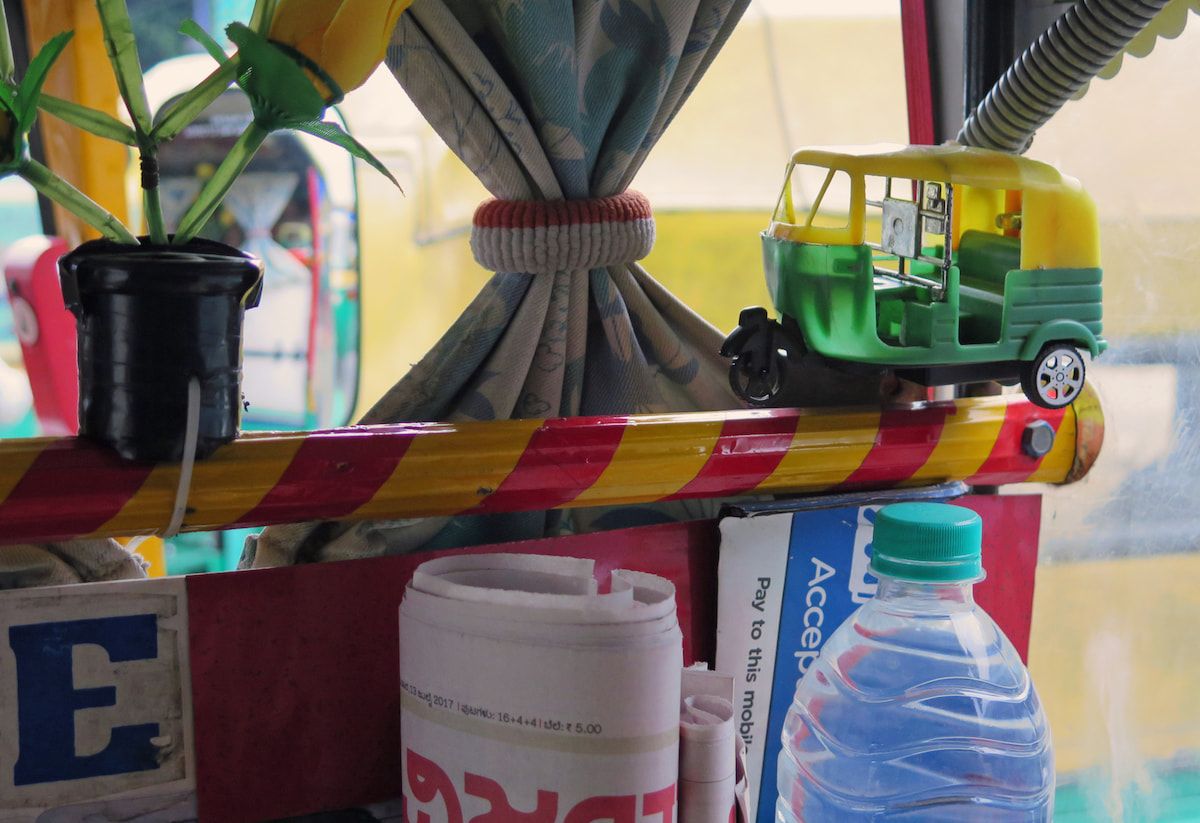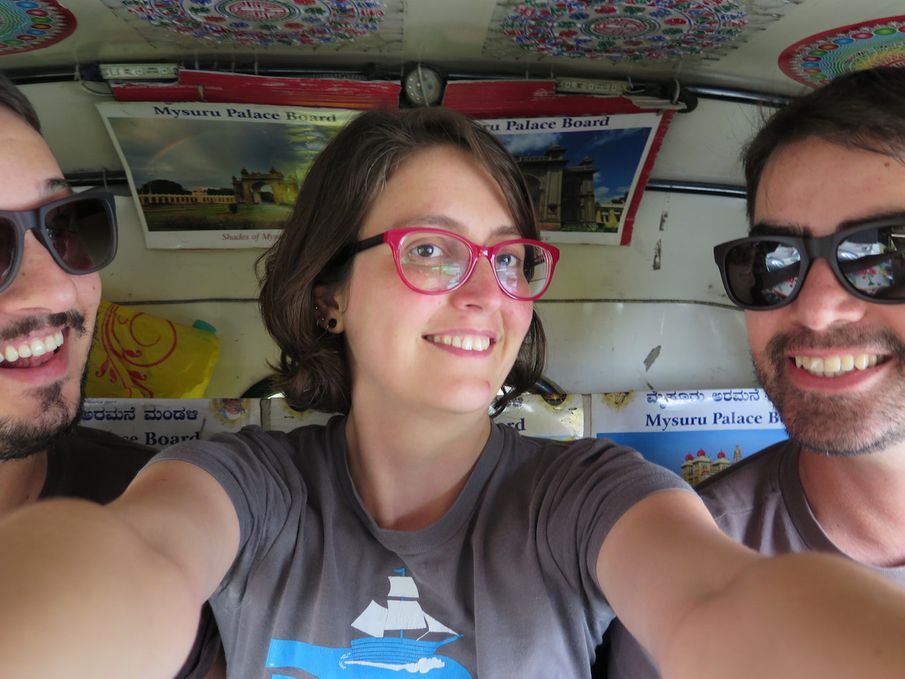After years of routine working at the same company, Julia was ready for an adventure. But she got more than she bargained for when a simple ride in a tuk-tuk inspired her to expand her horizons
I always wanted to work hard, have a successful career, and do work that I could be proud of. But what I didn’t know when I was first employed in an office, aged 18, was that work life doesn’t necessarily create a happy life.
Since that first internship, I’ve spent more than 15 years successfully navigating meetings, presentations and spreadsheets. So last year, after five years working for the same company, I thought it was time for something different; I took a six-month break to travel the world, learn about myself, and expand my horizons.
Along the way I met people from different cultures, meditated in remote zen temples, rode a bike for the first time in eight years, and had many adventures. And I learned something I didn’t expect about happiness at work.
And it all started because of a tuk-tuk ride...

No trip to India would be complete without a tuk-tuk ride and, chances are, there will be many. For the unaccustomed, riding an auto-rickshaw can be quite the adventure; between negotiating prices, navigating the crazy traffic, and the dangerous overtaking, you are definitely removed from your comfort zone.
But somehow it’s also fun, in the way that it can only be because you’re far from home and don’t have any other options.
By the time I arrived in busy Bangalore with two good friends, we had been in lots of tuk-tuks. So when we needed a ride, we just jumped into the next one we found. But as we got on, everything changed; we were sitting in what can only be described as the best tuk-tuk in the world.
Auto-rickshaws are usually a pretty simple affair: a three-wheeler with a small bench that can fit up to three people (although you may see whole families and the odd pet in them too). But this one was on a completely different level, with plexiglass between the driver and the passenger’s seat, like in a New York taxi from a 70s film. The daily newspaper was folded neatly in a little holder.
Then, there were the decorations: stickers with mandala patterns on the ceiling, colourful children’s drawings everywhere, fake flowers in a tiny vase, and even a little tuk-tuk miniature. This tiny space was a treasure trove. The cherry on top was the bottle clearly labelled “drinking water” made available for the customers.
We had hit tuk-tuk jackpot. We spent the short time it took to get to our destination admiring all the details and taking photos of every little thing – this was a great tuk-tuk ride, and it became a highlight of the trip.
What made this whole experience unique was the level of attention and care involved. No detail was overlooked, everything was done deliberately to make sure that we had the best possible experience. And, of course, we did.
The care added to that particular tuk-tuk gave a new dimension to our journey.

A ride of less than £1 bought in a lot of value to our trip. By going above and beyond all expectations, that quick ride became a story to tell.
On reflection, I noticed something else: for me, this was just a short trip from one place to the next; for the driver, it was his life, and he was making the most of it. By adding dedication, energy and authenticity to his work, he was in the business of creating happiness. Driving people around was just how he did it.
I took a break from my job expecting to find happiness outside of work, but now I had a clear example of how work can drive happiness (pun intended). I wondered where else I could find happiness at work, so I decided to start to pay attention and collect examples of work that created happiness in my travels. And there were plenty!
In Kyoto, Japan, famous for its hundreds of ancient temples, I decided to try zen meditation. In a bright room overlooking a quiet garden, a large group of high school students shuffled into the tatami room. Reverend Taka walked in and greeted us with a large smile. Although he was wearing a traditional outfit and looked very much like the Buddhist monk that he is, there was something unexpected about him.
He talked about our limited attention spans, comparing our difficulty to focus with the concepts of big data and artificial intelligence. This was 21st century zen meditation for a Western crowd, and he kept everyone engaged as he introduced meditation practice in a way that the group could understand and relate to.
Then in South Africa, a visit to Robben Island was a humbling example that happiness can really be found anywhere. The prison where Nelson Mandela and many other political prisoners were held during the apartheid years provides a sobering account of the country’s recent history.
You learn about prison life, terrible policies and attempted escapes. But to me what made this experience truly unique is that the guides that lead the prison tours are political prisoners who experienced life first-hand on Robben Island. Our guide told us of his daily routine, and the details about how guards took away benefits such as family visits and food rations.
But slowly, a different story started to appear: there was a lot of positivity in his attitude. At the prison gates, his first question to our group was: “Why do you all look so serious?” Along the way he made plenty of jokes to put everyone at ease, and by taking a difficult subject and making light of it, he got a different kind of response and openness. Seeing this example of happiness and optimism in the most unlikely setting was really inspiring.

After six months of adventures, it was time for me to go back to work. I was feeling re-energised, relaxed and ready to get back into a normal routine. But I also found a renewed sense of purpose: I had learned that happiness is engaging and infectious – and it can be found in any work.
The people I met on my travels were creating happiness through their work, so I wanted to bring this to life in my own way. I spent some time looking at my work and noticing things I could do differently to add some happiness to each day.
I started having proper lunch breaks away from my desk, which led to many great conversations with colleagues. I decided to take more time to appreciate people for the great work that they do, and gratitude definitely makes for a happy workplace. I decided to create a morning routine, which includes meditating and exercising. This puts me in the right mindset for work, so I get to the office much more focused and present.
These small changes have changed how I work, and I plan to add more over time. In my travels, I learned that happiness can be found anywhere, so I’m committed to finding it in my own work, every day.
Rachel Coffey, BA MA NLP Mstr, says:
Julia’s adventure is an inspiring reminder of just how much we miss when we are stuck in our day-to-day routines. For some, going travelling for six months might feel like a risk. However, often the risk is in trying to keep everything the same, even though our needs as an individual might have changed. Julia discovered that changing her approach to work completely transformed her experience of it. By being mindful about what you want and making positive changes, you too can have the fulfilling work-life you deserve!


Comments